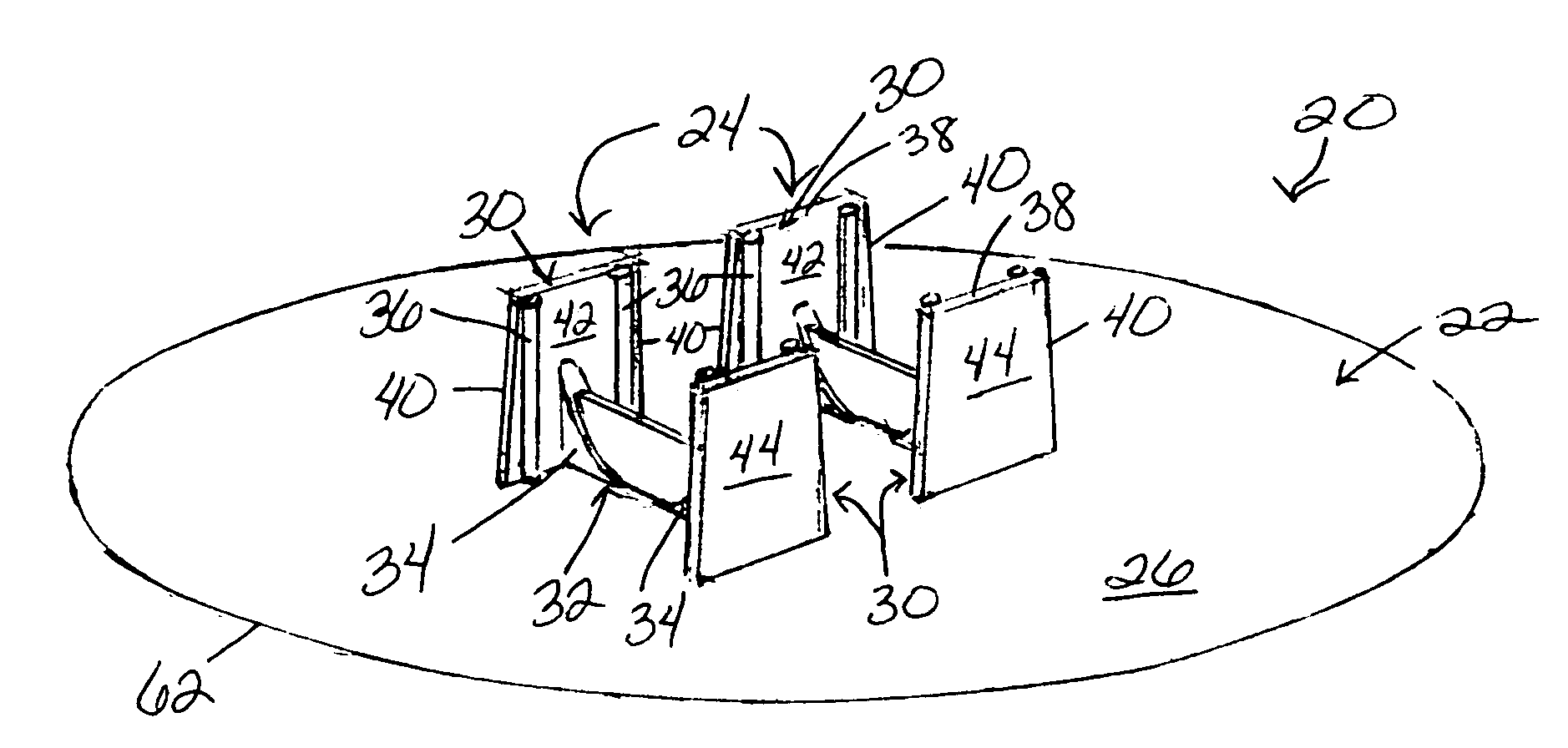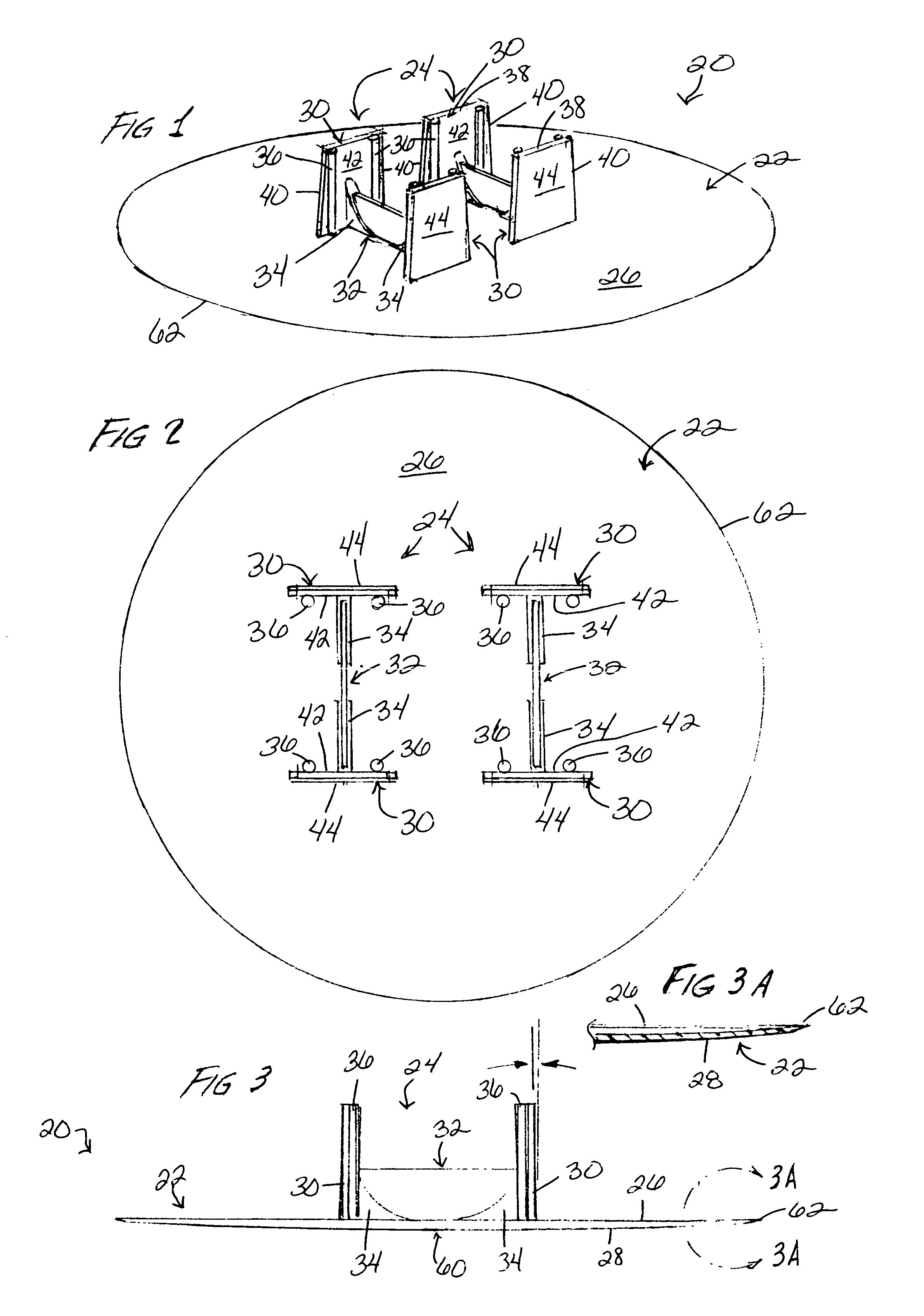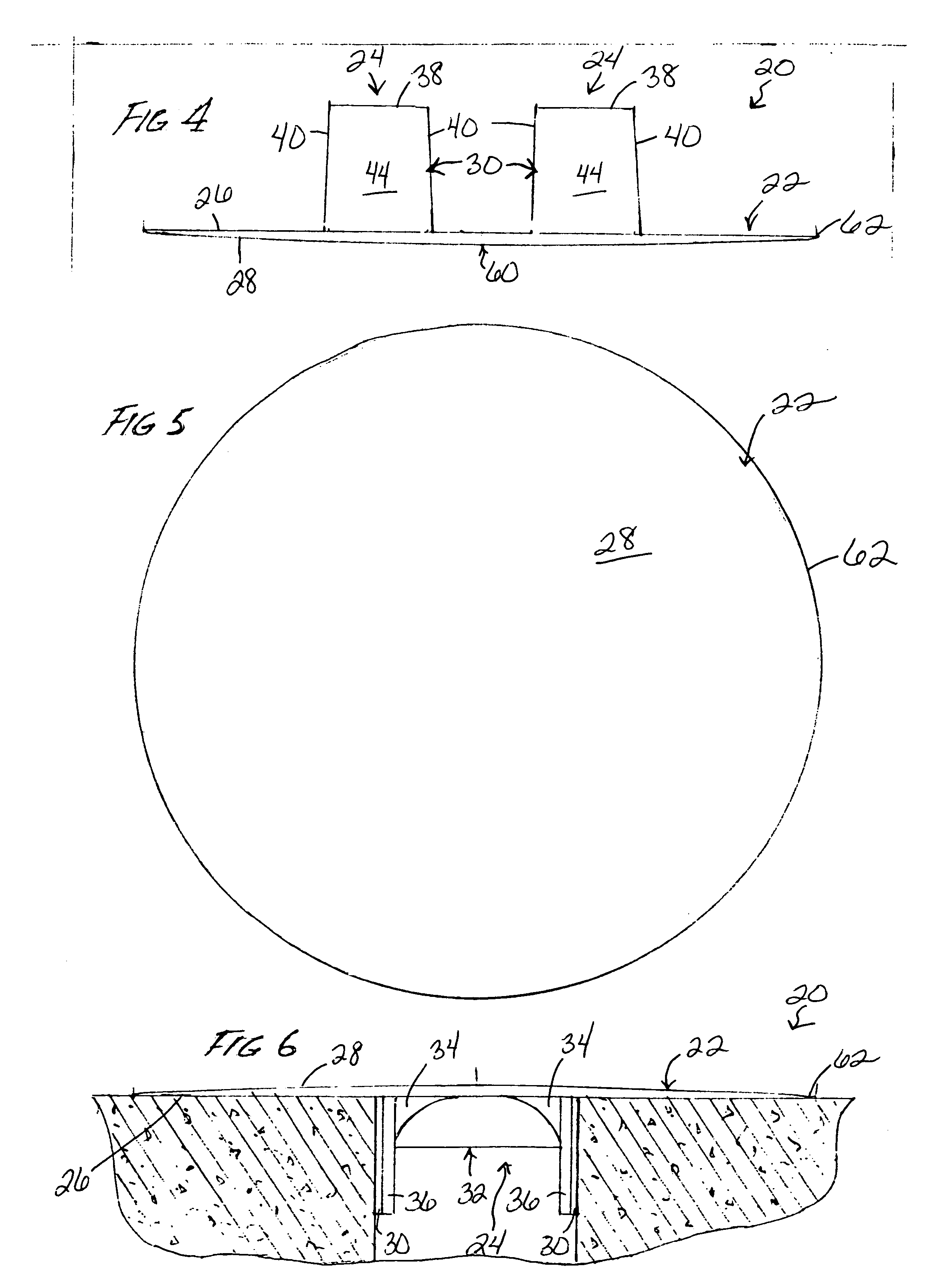Cover for pockets in precast concrete panels
a precast concrete and pocket technology, applied in the field of precast concrete pocket covers, can solve the problems of not being able to easily bond paint, easy to fall out of or be easily removed from the pocket, and affecting the appearance of the building, etc., to achieve excellent adhesion and adhesion, strong and flexible, and easy to install and manufacture.
- Summary
- Abstract
- Description
- Claims
- Application Information
AI Technical Summary
Benefits of technology
Problems solved by technology
Method used
Image
Examples
Embodiment Construction
[0033]The invention concerns a cover 20 for concealing an open pocket, recess or the like present in a precast concrete panel following removal of a form for positioning an anchor in the precast concrete panel. The cover 20 maintains its flexural strength and position due to being under compression while in position in the open pocket in the precast concrete panel due to its structure.
[0034]Referring to FIGS. 1-7, cover 20 comprises a planar or flat or substantially planar or flat top portion 22 sized to conceal an open pocket in a precast concrete panel. The top portion 22 has an underside 26, an outer side 28 and a peripheral edge 62. The top portion 22 is preferably disk-shaped. The cover 20 also comprises at least one projecting member 24, and more preferably two projecting members 24, extending outward from the underside 26 of the top portion 22. While the cover 20 preferably comprises two projecting members 24, the cover 20 may comprise any suitable number of projecting member...
PUM
 Login to View More
Login to View More Abstract
Description
Claims
Application Information
 Login to View More
Login to View More - R&D
- Intellectual Property
- Life Sciences
- Materials
- Tech Scout
- Unparalleled Data Quality
- Higher Quality Content
- 60% Fewer Hallucinations
Browse by: Latest US Patents, China's latest patents, Technical Efficacy Thesaurus, Application Domain, Technology Topic, Popular Technical Reports.
© 2025 PatSnap. All rights reserved.Legal|Privacy policy|Modern Slavery Act Transparency Statement|Sitemap|About US| Contact US: help@patsnap.com



